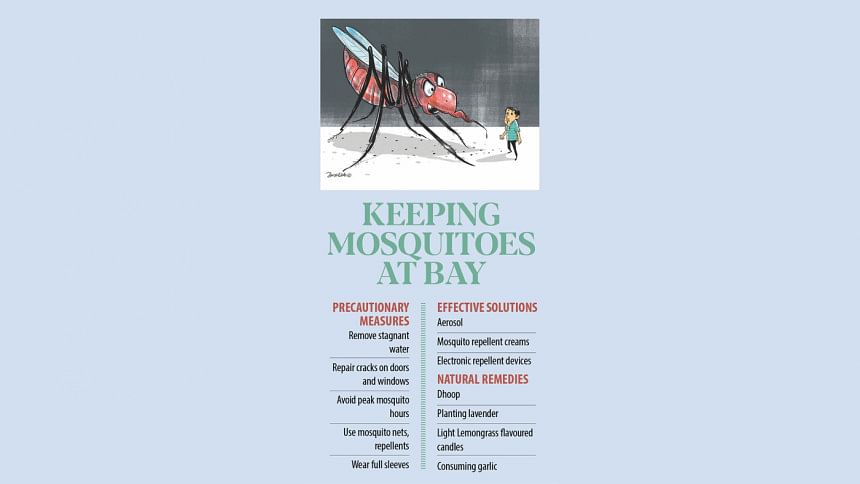Dengue cases surge outside Dhaka

The number of dengue cases outside Dhaka has exceeded those within the capital, according to the Directorate General of Health Services.
However, the death toll remains higher in Dhaka.
As of yesterday morning, the total number of dengue cases this year is 42,470, with 24,169 reported outside Dhaka. However, of the 214 deaths, 67 were from outside Dhaka.

Chattogram division leads with 8,203 cases, followed by 6,027 in Dhaka, 3,656 in Barishal, and 3,373 in Khulna, all from non-city corporation areas.
Among the districts, Cox's Bazar has the highest number of cases with 3,536, followed by Narsingdi with 1,265 cases, Chattogram with 1,128, and Barguna with 1,034 cases.
In terms of fatalities, the highest number of deaths occurred at Dhaka Medical College Hospital with 43 deaths, followed by Mugda Medical College and Hospital (27), Mitford Hospital (17), and Chattogram Medical College Hospital (15).
Bangladesh witnessed its first dengue outbreak in Dhaka in 2000. Until 2023, dengue cases were always higher in Dhaka than elsewhere. However, this trend changed last year, with dengue cases increasing outside Dhaka.
Prof Kabirul Bashar, an entomologist from Jahangirnagar University, attributed this shift to several factors.
"The lack of adequate anti-mosquito drives, limited public awareness, and the possibility of infection by all dengue serotypes have contributed to the surge in cases outside Dhaka," he said.
While the mosquito control efforts in Dhaka have been insufficient, Prof Bashar said the situation outside the capital is worse.
"Residents of Dhaka are more aware of dengue than those living in other areas, which is another reason for the rise in cases outside the capital," he added.
Prof Bashar also mentioned that approximately 50 percent of Dhaka's population has been infected by different serotypes of the dengue virus since 2000, providing some level of immunity. Conversely, the population outside Dhaka has not been exposed to the virus as frequently, making them more vulnerable to infection.
Urbanisation outside Dhaka is also playing a significant role in the spread of dengue, as Aedes mosquitoes, the carriers of the virus, find suitable breeding conditions in these rapidly growing areas.
Prof Bashar stressed the need to intensify mosquito control measures across all cities to combat the spread of dengue. "The government must give equal attention to all cities to control Aedes mosquitoes," he said.
Dr HM Nazmul Ahsan, associate professor at Shaheed Suhrawardy Medical College Hospital, explained the higher death toll in Dhaka. "Many critical patients from outside Dhaka are referred to hospitals in the capital, contributing to the higher number of deaths here. Hospitals outside Dhaka are often reluctant to treat critical patients and send them to Dhaka instead."
Prof Ahmedul Kabir, former additional director general of DGHS, recently advised that patients should be hospitalised as soon as they exhibit dengue symptoms such as nausea, abdominal pain, diarrhoea, respiratory issues, and fluctuating body temperature.
"There is no need for referrals to Dhaka unless a patient is in a critical condition. Local hospitals are fully capable of managing dengue patients, and the journey to Dhaka can worsen a patient's condition," he added.
The government has opened separate dengue units in all medical college hospitals across the country to handle the surge in cases.

 For all latest news, follow The Daily Star's Google News channel.
For all latest news, follow The Daily Star's Google News channel. 



Comments